If you've ever wondered why some gardens feel more 'energetic' than others, it may surprise you to know that it is often the colour in the garden, and the various combinations of warm and cool colour, that creates this effect.
Gardens can often be all about colour, and whether you like a flamboyant cheerful garden full of bright colour or a quiet restful garden, it all comes down to personal preference. Luckily, it's quite easy to use flowers or flowering plants to create a particular 'feel' in your garden, so read on to find out how you can go about creating a garden that works for you.
We'll look at how colour affects the feel of your garden and how you can use the colour wheel to help you work out which colours are warm and which are cool, so you can create a colour palette that works for you. Knowing about how colour works is actually very helpful and it can lift your garden from something fairly ordinary to simply amazing!
And the flowers you ask? Well, you'll find a selection of flowers at the end that you can use to create, in this instance, a 'cool' garden. We'll explore the warm colours and how best to use them another time, so watch this space.
How Colour Affects the Feel of Your Garden
We know that colour can have an effect on your mood and this concept can be used to great advantage in your garden.
Blues, mauves and greens are considered cool colours. They are soothing and create a feeling of restfulness, calm and quiet in a garden. They are also colours that can work well in small garden spaces as they don't 'crowd' out the space with too much enthusiastic colour.
Other colours, the warm ones such as yellow, red and orange, are usually bright and energising and bring with them a feeling of liveliness, movement and happiness.
Combining both warm and cool colours, including the deeper shades of these colours, can bring an energy and vibrancy to the scene, with the movement of the warm colours being balanced by the cool colours.
A monochromatic colour scheme can also work very well in your garden as it brings another type of feel. That 'feel' can be organised and 'curated' and maybe even old-fashioned, but depending on the plants and colours you choose, you can also create an edgy, modern feel. A monochromatic colour scheme can be especially useful if you like a particular colour and don't really want to mix it with anything else. It won't create a boring or 'quiet' garden either, as it can comprise flowers in various shades of cheerful yellow for example. When going for a monochromatic colour scheme, it helps to choose flowers that have different shapes or form, and in different hues or shades, as this helps to keep the design alive and interesting.
The Colour Wheel
The colour wheel is a very useful tool as it helps you create a pleasing colour palette in the garden. It's based on the primary colours of red, yellow and blue, and resembles a full rainbow. Where you choose your colours from on the wheel will determine the feel you can create in your garden.
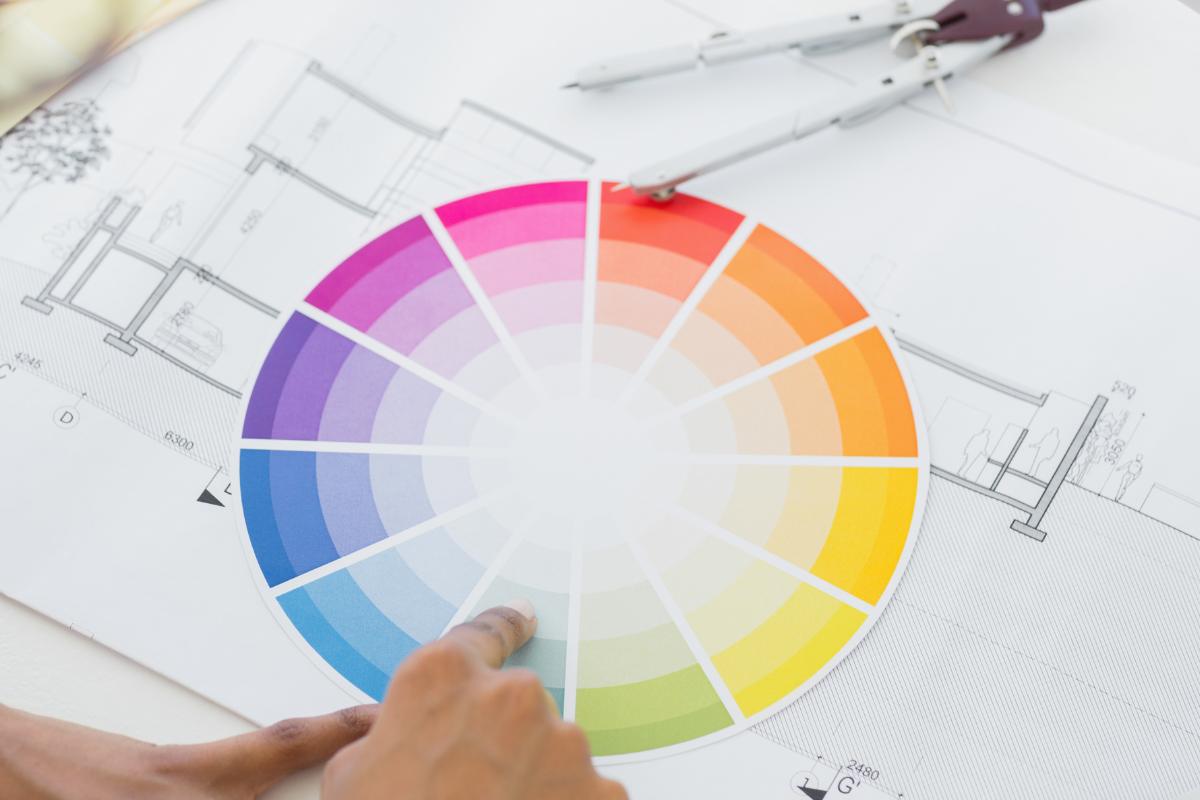 Using a colour wheel to choose a colour palette.
Using a colour wheel to choose a colour palette.
On the colour wheel, complementary colours are found on opposite sides of the colour wheel, or can be evenly spaced around the wheel. These colours are usually contrasting, create high impact and are often used to create vibrancy in a design.
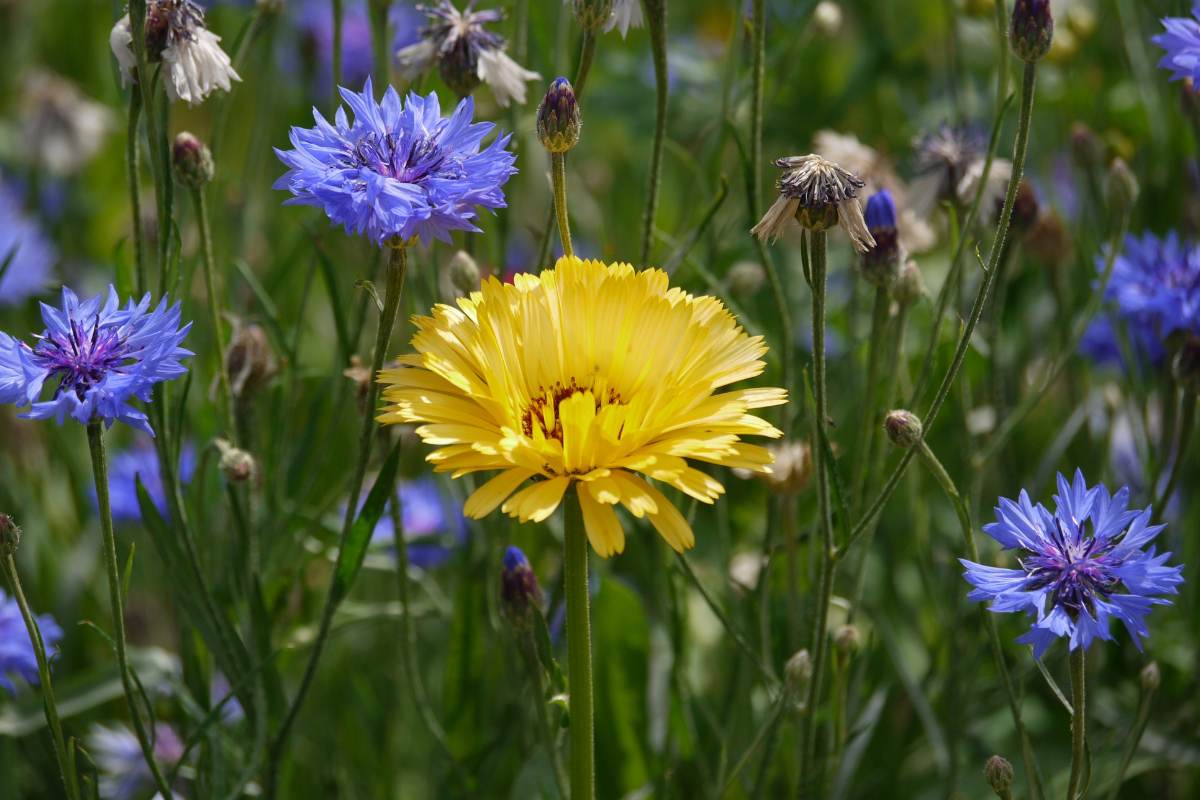 Yellow and blue are complementary colours on the colour wheel.
Yellow and blue are complementary colours on the colour wheel.
Harmonious colours are found next to each other on the colour wheel, and these colours can be either cool or warm. When using harmonious colours, they work best in threes with one colour being dominant and the other colours being used for accent or background highlights.
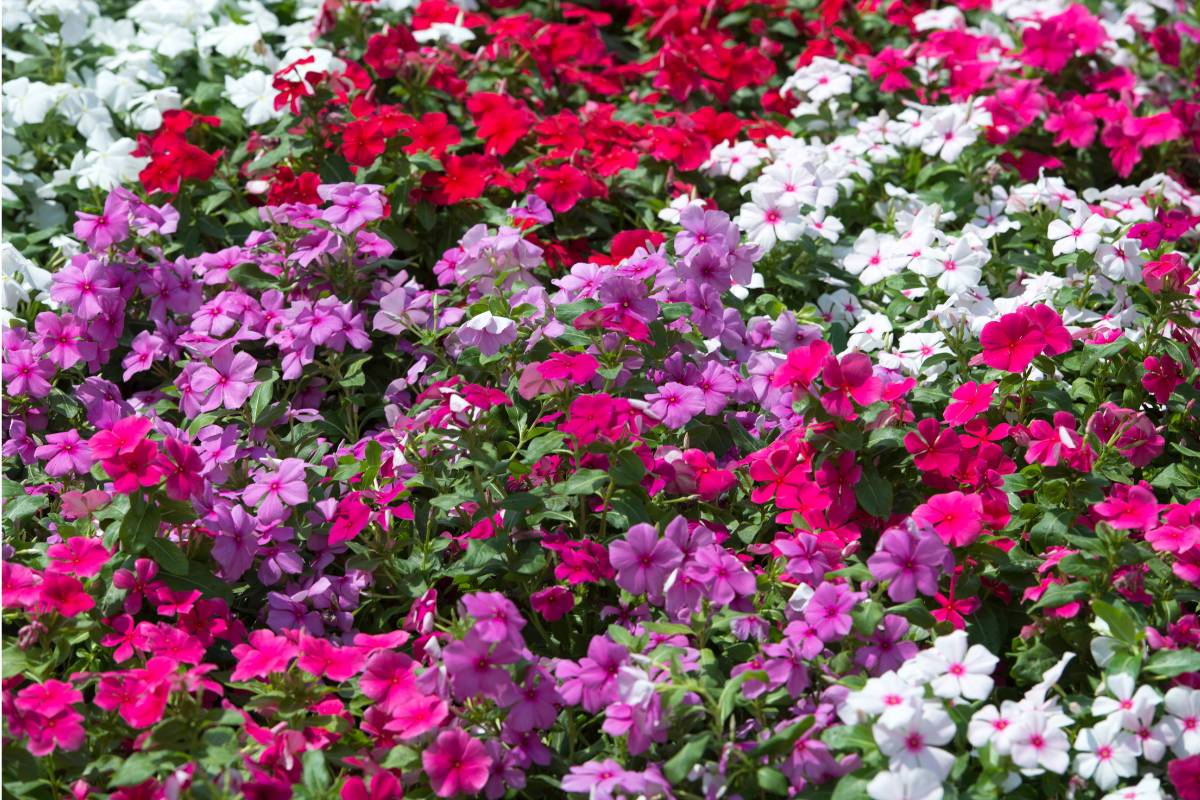 Harmonious colours - shades of red and pink are found next to each other on the colour wheel.
Harmonious colours - shades of red and pink are found next to each other on the colour wheel.
You should also keep neutral colours in mind when planning your garden. These are the colours that can be used without changing the effect you want to achieve, and they often help to tie a design together. Colours that you may be familiar with as being 'neutral' are white, black, grey, silver and shades of brown. You will find these colours in your garden in the soil, rocks, stones and earth, as well as in some hard landscaping elements, and of course there are always white flowers and plants with silvery leaves that you can use. Green is often thought of as a neutral colour in gardening as it tends to blend well with most other colours, either offsetting them or acting as a buffer between contrasting colours.
The Cool Colours and Flowers That You Can Use
Blue, mauve or purple, and green are counted as cool colours. Your choices are almost limitless when it comes to finding flowers in shades of blue and purple, although true blue is a relatively rare colour in nature.
Nigella, borage, cornflower, nemesia, delphinium, forget-me-not, veronica, lobelia, larkspur, ageratum, salvia, and felicia are great choices for including various shades of blue in your colour scheme.
Mauve or purple you'll find in violas and lavender as well as sweet peas.
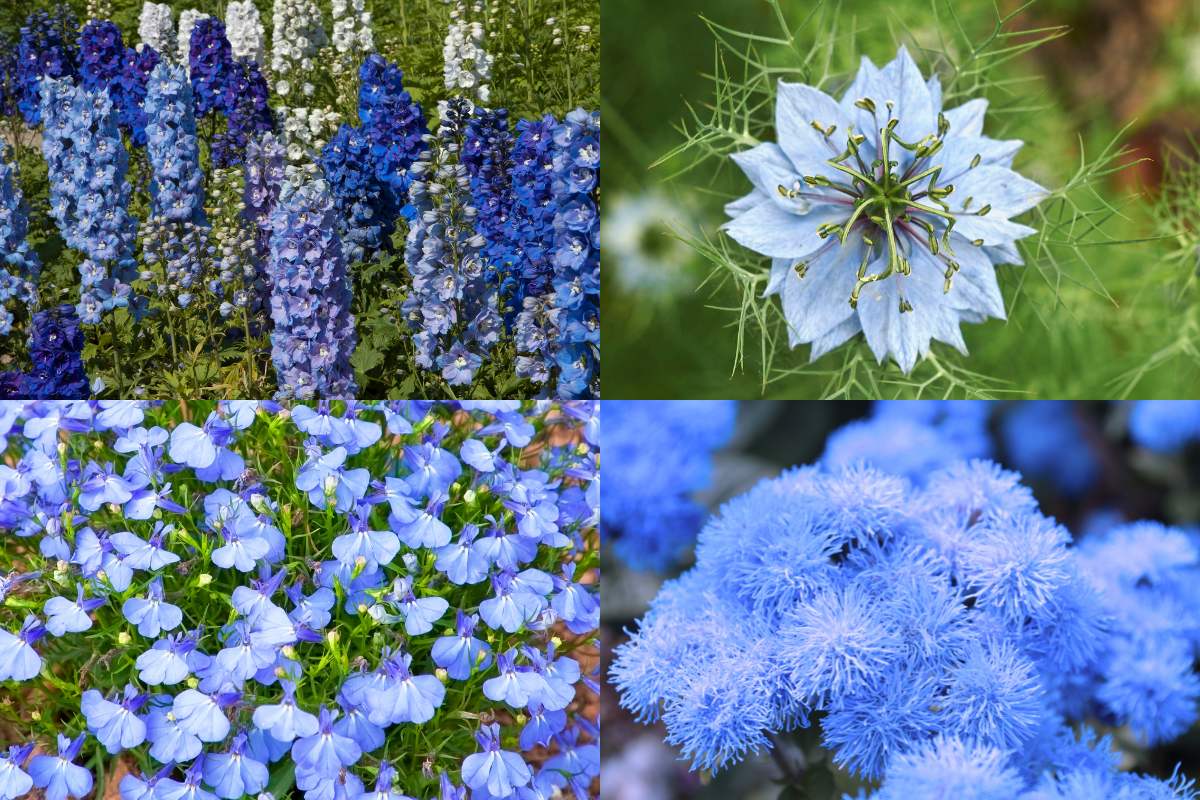 Cool colour can be found in delphinium, nigella, lobelia and ageratum.
Cool colour can be found in delphinium, nigella, lobelia and ageratum.
Pale pastels are also considered cool colours, so pale yellows, pinks, and light orange fall into this category. This means that you can use some of the warm colours in your design if you don't fancy a fully monochromatic effect.
Pale pink zinnia, dianthus, stock, sweetpea, petunia, rose paper daisy rose, snapdragon, and cosmos will bring shades of pink to your garden.
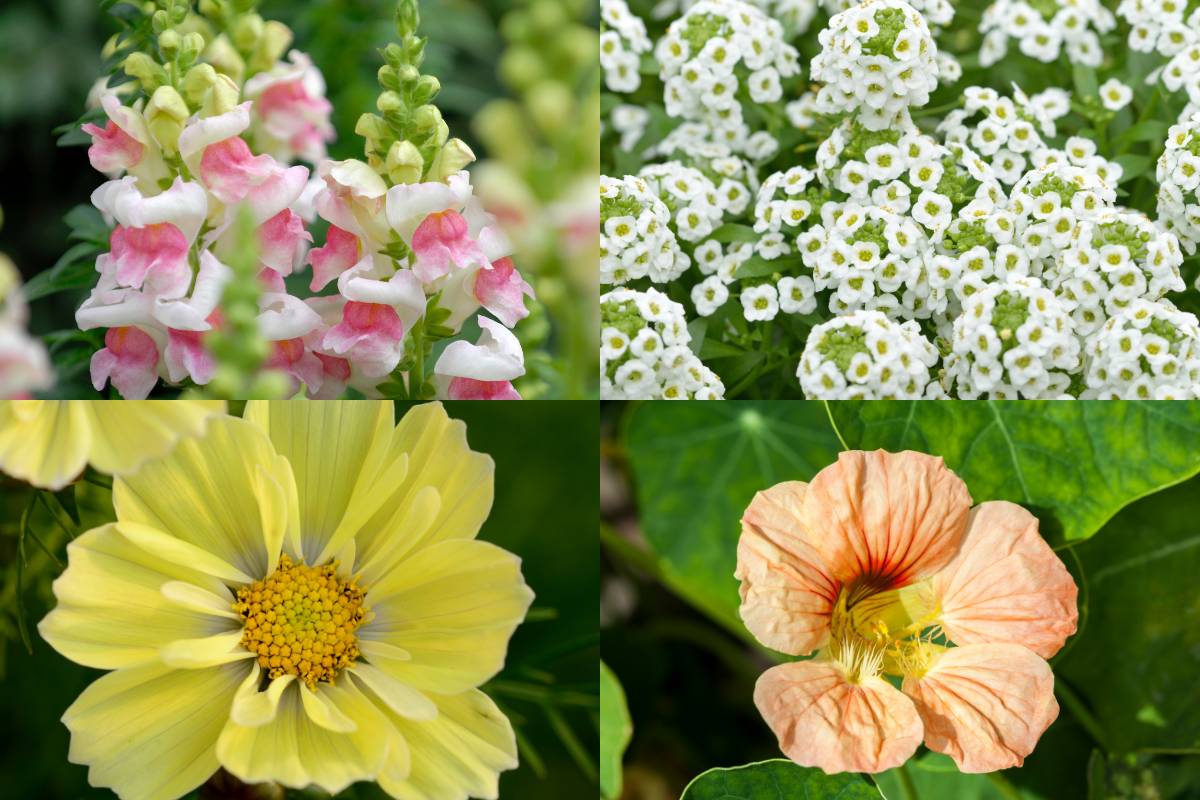 Pale pastels and whites can be found in snapdragons, allyssum, Cosmos 'Xanthos' and peach-coloured nasturtiums.
Pale pastels and whites can be found in snapdragons, allyssum, Cosmos 'Xanthos' and peach-coloured nasturtiums.
If you're after a hint of warmth the pale yellow Carnation 'Lemon Fizz', Zinnia 'Isabellina', Nasturtium 'Peach Melba', Aster 'Benary’s Princess Yellow', French marigold 'Lemon Drop', and Cosmos 'Xanthos' will work well.
Don't forget the white flowers! They can be considered a cool colour and are very useful to highlight the other colours. Alyssum, armeria, candytuft, Shasta daisy, gypsophila, chrysanthemum, cosmos, stock, and Queen Anne’s lace all offer white flowers of varying heights and sizes. Use them to highlight and offset the other colours in your garden design.
***
Now that you've discovered how to use colour in your garden, we hope you'll give it a go to create some different 'feels' in your garden this season.
And don't forget that you can always include vegetables in your colour coordinated garden design; consider the silvery greens of cabbage leaves and the purple buds of artichokes for a cool colour scheme. Go on, give it a go… it's not as crazy as it sounds!
Did you know you can use the filters on this website to browse flowers by colour?
- Browse blue flowers
- Browse purple/violet flowers
- Browse white/cream flowers
- Browse pink/rose flowers
- Browse yellow flowers
- Browse red/crimson flowers
- Browse orange flowers
- Browse green flowers
- Browse chocolate/brown/black flowers





